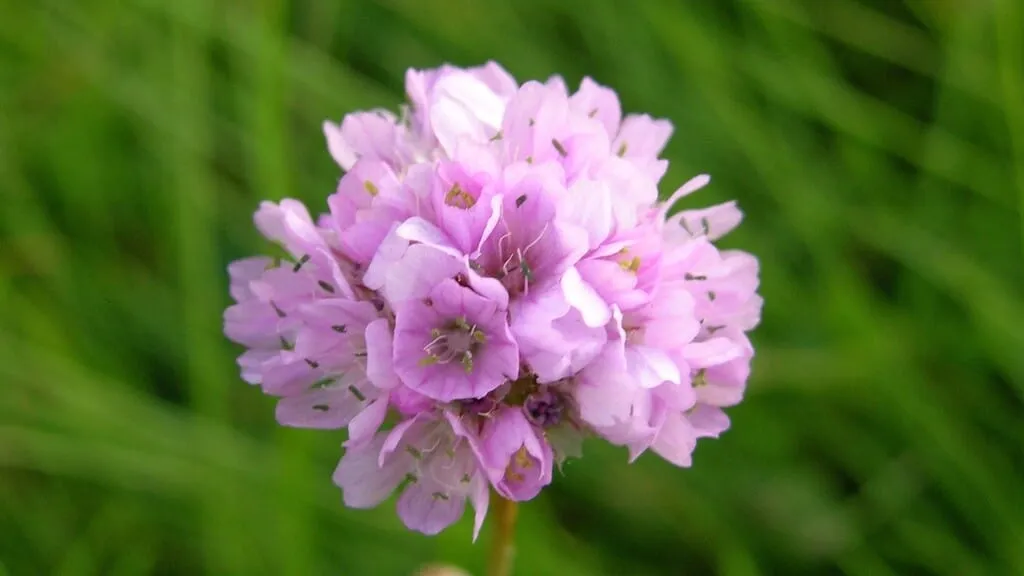jaundiceinnewborns.net – Sea Thrift (Armeria maritima), also known as the Thrift or Sea Pink, is a hardy perennial plant beloved for its compact, mound-forming habit and vibrant, globe-shaped clusters of flowers. Found naturally growing along coastal cliffs and salt marshes, this adaptable plant thrives in rocky, well-drained soil and is well-suited to a variety of garden settings, particularly those with poor or dry conditions. With its cheerful blooms and ability to tolerate tough environments, the Sea Thrift is a wonderful addition to coastal gardens, rock gardens, and alpine landscapes.
Appearance and Growth
Sea Thrift is a low-growing perennial that typically reaches 6 to 12 inches in height and forms a dense, evergreen tuft of grass-like leaves. The plant’s narrow, linear leaves grow in a rosette at the base, providing a soft, textured backdrop for its brilliant flower heads. The flowers are borne on long, slender stems and appear in dense, round clusters, with each flower consisting of five pink, white, or occasionally purple petals. The blossoms have a rounded, pom-pom-like appearance, which gives them a charming, full-bodied look.
The blooming period of Sea Thrift typically spans from late spring to early summer, with flowers lasting for several weeks. After the flowers fade, the plant retains its attractive foliage, providing year-round interest in the garden.
Flowering and Pollination
Sea Thrift flowers are a magnet for pollinators, attracting bees, butterflies, and other beneficial insects. The plant’s bright and abundant blooms are a valuable food source for these pollinators, especially in coastal regions where other nectar-rich flowers may be scarce. The flowers are also known for their long-lasting quality, staying fresh for weeks and adding color to the garden during the early to mid-summer months.
While the flowers are not particularly fragrant, their vibrant color and dense clusters make them highly visible and appealing to a variety of insects. Sea Thrift’s ability to withstand poor soil and dry conditions, combined with its ability to support pollinators, makes it a popular choice for both ornamental gardens and wildlife-friendly spaces.
Care and Cultivation
Sea Thrift is known for its resilience, thriving in poor, rocky, or sandy soil where many other plants might struggle. It prefers full sun and well-drained conditions, making it an ideal candidate for coastal gardens, rock gardens, or areas with dry soil. The plant is highly drought-tolerant once established and can withstand salty conditions, making it perfect for seaside landscapes.
To grow Sea Thrift successfully, it is best to plant it in a location that receives plenty of sunlight, as this will encourage healthy growth and abundant flowering. The plant should be spaced about 6 to 12 inches apart to allow for its spreading habit. If the soil is particularly heavy or clayey, consider amending it with sand or gravel to improve drainage.
Sea Thrift is relatively low-maintenance and requires little care after establishment. Occasional watering during dry spells can help the plant thrive, but it is generally quite drought-tolerant. Deadheading spent flowers will help maintain a tidy appearance and may encourage a second round of blooms. In the fall or early spring, trimming back old growth can also promote fresh, healthy foliage and more vigorous blooming.
Uses in Landscaping
Due to its attractive flowers and compact growth habit, Sea Thrift is a fantastic choice for various garden settings. It is especially well-suited for coastal gardens, where its tolerance of salt and wind allows it to thrive in challenging conditions. Sea Thrift also performs beautifully in rock gardens, alpine gardens, and low-maintenance landscapes.
Its small size makes it ideal for planting in the front of borders, along paths, or in container gardens, where it can form colorful, mound-like drifts. The plant’s attractive foliage and flowers can also be used in hanging baskets or window boxes, adding a charming touch to outdoor spaces.
Sea Thrift is particularly effective when planted in groups or drifts, creating a soft, colorful carpet of blooms. It pairs well with other drought-tolerant plants such as lavender, sedum, and yarrow, as well as other coastal-loving species like seaside daisies and beach grass.
Ecological Importance
In its native habitat along coastlines, Sea Thrift plays an important ecological role in stabilizing sandy soils and preventing erosion. The plant’s dense, spreading root system helps hold soil in place, particularly in areas with high winds and salt spray. It also provides a habitat and food source for a variety of insects, including bees, butterflies, and moths.
By supporting pollinators and contributing to soil stabilization, Sea Thrift enhances biodiversity and promotes a healthy ecosystem in both natural and cultivated landscapes. Its resilience and adaptability make it a valuable addition to any garden aiming to support wildlife and promote sustainability.
Symbolism and Cultural Significance
The Sea Thrift’s delicate yet resilient nature has made it a symbol of strength and perseverance. Its association with coastal regions also connects it to themes of stability, enduring beauty, and the power of nature. In some cultures, the flower is admired for its simplicity and quiet elegance, representing modesty and beauty in the face of harsh conditions.
While it may not be as widely recognized as some other flowers, the Sea Thrift holds a special place in coastal gardens and is often appreciated for its hardiness and adaptability.
Conclusion
The Sea Thrift is a hardy and beautiful perennial that brings color, texture, and resilience to any garden. Whether grown in coastal landscapes, rock gardens, or containers, its bright, pom-pom-like flowers and evergreen foliage make it an enduring favorite among gardeners. As a pollinator-friendly plant, Sea Thrift also plays an important role in supporting local wildlife, making it an excellent choice for eco-conscious gardeners. With its vibrant blooms, drought tolerance, and ability to thrive in challenging conditions, the Sea Thrift is a perfect example of nature’s beauty and resilience.
